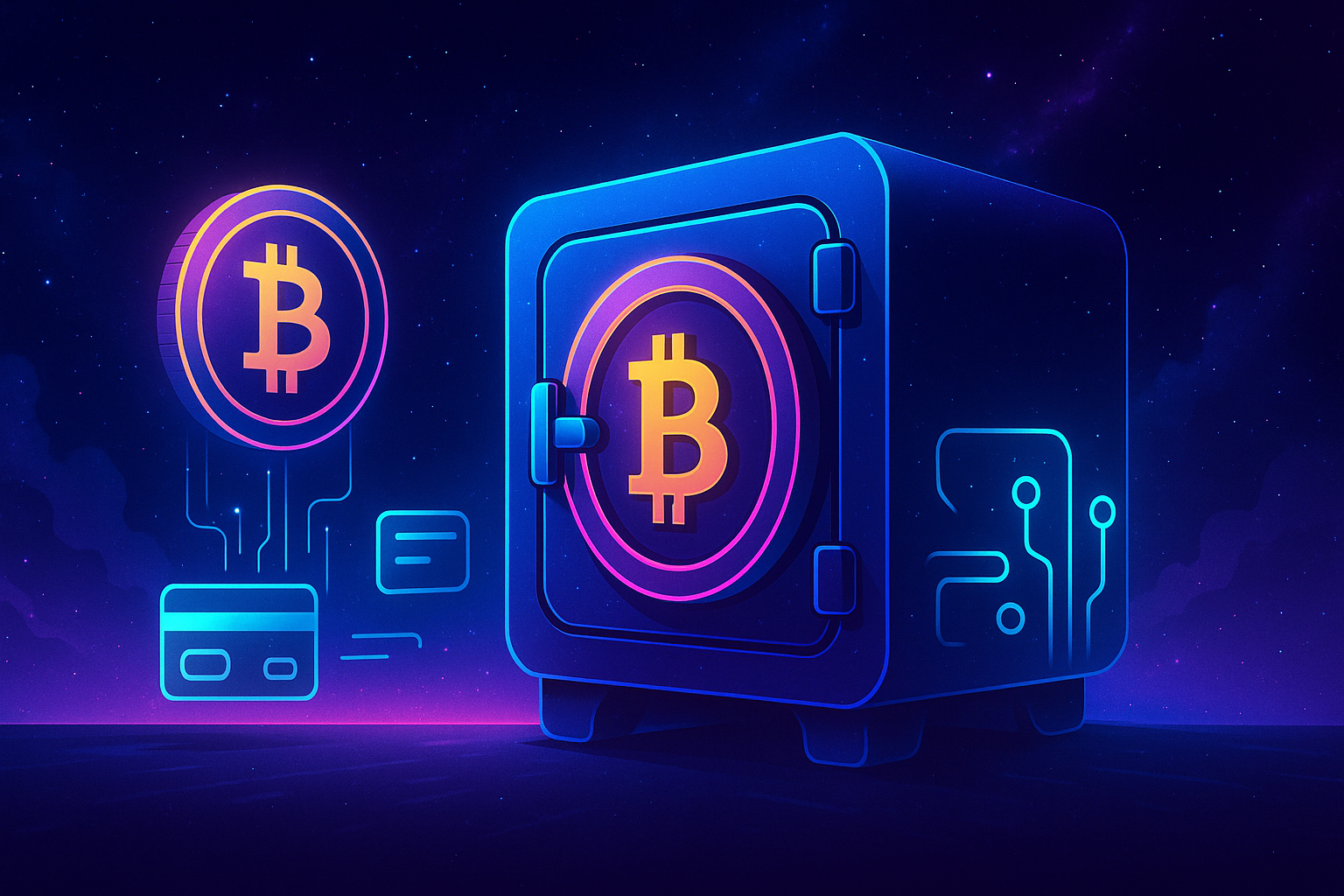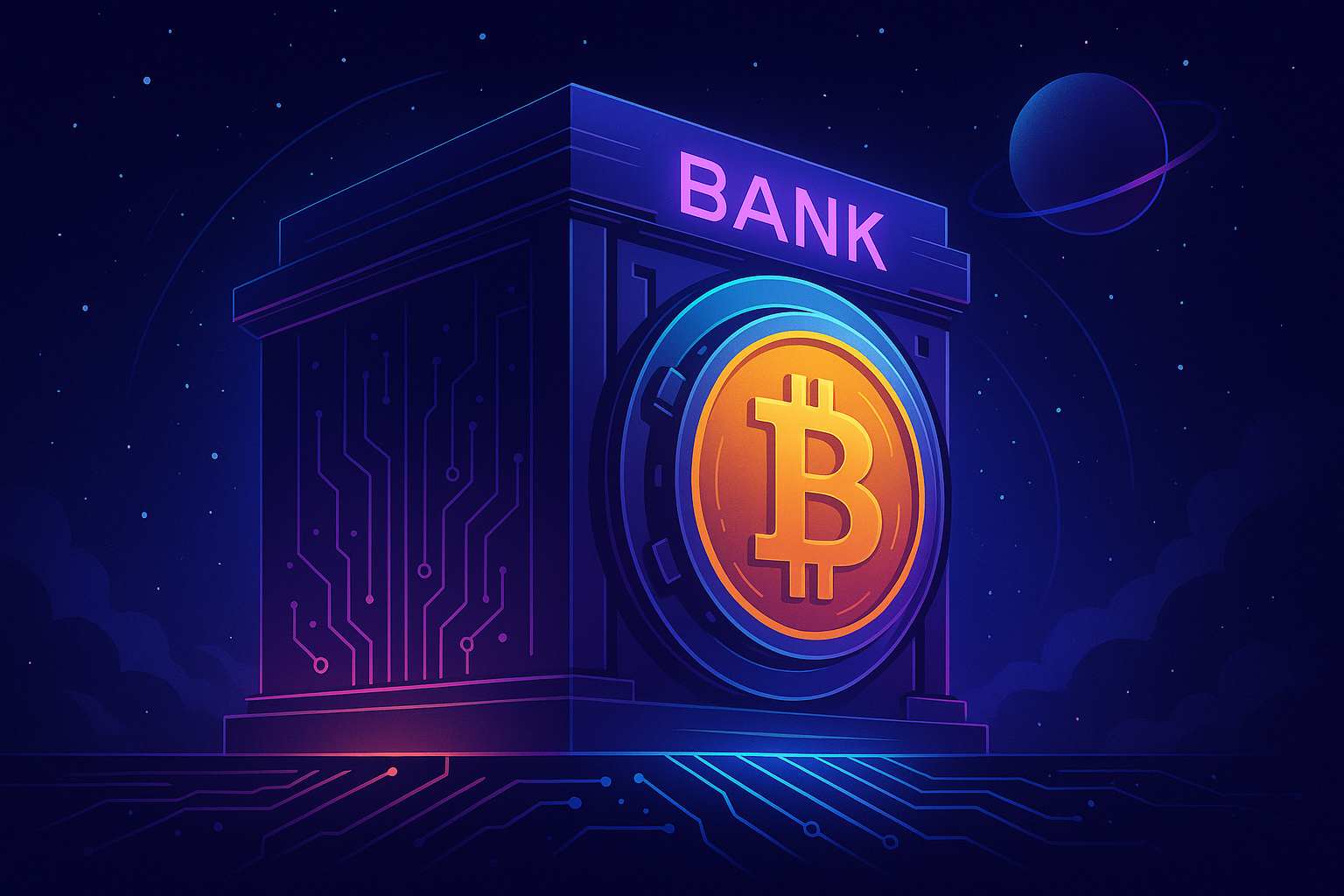Bitcoin Banks have emerged as a trending topic as major financial institutions enter the cryptocurrency space. For centuries, banks have acted as the backbone of the global economic system, providing secure storage, lending, and payment services.
But in recent years, the rise of cryptocurrency has shaken the foundation of traditional finance. Among the boldest developments is the concept of Bitcoin Banks: financial institutions that merge the security and innovation of blockchain technology with the stability and services people expect from conventional banks.
With over 420 million cryptocurrency users worldwide in 2024 and 1 in 5 U.S. adults owning digital assets, the question isn’t whether Bitcoin will influence finance; it already has. Instead, the question is: could Bitcoin Banks represent the future of money? Let’s find out.
What is a Bitcoin Bank?

Bitcoin Banks serve as a bridge between traditional banking and the cryptocurrency world. The concept fascinated me because these institutions provide familiar services; loans, money preservation, transfers, but use Bitcoin and other cryptocurrencies instead of dollars.
Wyoming’s creation of a special charter in 2019 allowed crypto companies to become “special purpose depository institutions.” Kraken, Avanti, and Custodia emerged as notable examples. That same year marked a milestone when JP Morgan became the first major bank to launch JPM Coin, its cryptocurrency to speed up corporate transactions.
These banks typically provide:
- Crypto Wallets – Secure storage solutions for Bitcoin and digital assets.
- Savings Accounts – Interest-bearing accounts where users earn returns on their Bitcoin holdings.
- Lending & Borrowing – Loans backed by Bitcoin collateral or lending services where users earn yield.
- Payments & Transfers – Faster, borderless payments without high remittance fees.
How Bitcoin Banks Work

Bitcoin institutions run on advanced security systems and specialized financial services. These institutions handle deposits differently from traditional banks. Cryptocurrency deposits require multiple confirmations on the blockchain before funds appear in your account. This safeguard stops double-spending from happening. A Bitcoin block takes about 10 minutes to mine, and many exchanges wait for four confirmations (around 40 minutes) before they credit your account.
Bitcoin-backed lending has become one of these banks’ most popular services. You can get cash without selling your Bitcoin by using it as collateral. These loans are a big deal because they can yield returns for lenders of over 10% annually. The bitcoin-backed loan market has grown to $8.50 billion, and experts predict it will reach $45 billion by 2030.
Security stands as the top priority for Bitcoin facilities. They keep crypto assets in advanced cold storage solutions, offline in secure facilities with armed guards watching them 24/7. These banks must follow strict rules, including Bank Secrecy Act requirements, anti-money laundering protocols, and sanctions enforcement.
Bitcoin Banks shine because they connect traditional finance with state-of-the-art cryptocurrency through services like stablecoin integration and blockchain infrastructure. They’ve started using blockchain technology to make operations faster and cut settlement times from days to minutes.
Is Bitcoin the Future of Money?

Many ask what makes Bitcoin valuable and why experts call it the future of money. Digital payment transaction volume tells a compelling story. It grew almost 15% in 2023 to over $2 trillion, and 89% of Americans now use digital payments.
Large institutions are placing significant bets on Bitcoin’s future. MicroStrategy has plans to acquire $42 billion worth of Bitcoin over the next three years, building on its existing $16 billion investment. Wisconsin and Michigan’s state pension funds have committed $160 million and $6.6 million, respectively.
The world’s largest bank, J.P. Morgan, processes $1 billion in daily transactions through their blockchain-based JPM Coin. This widespread institutional adoption points to Bitcoin’s transformation from an alternative asset to a mainstream financial tool. I’ve watched Bitcoin emerge during the 2009 financial crisis as a way to handle transactions without middlemen. Its value has taken wild swings – shooting above $60,000 before dropping by half in just weeks.
Bitcoin has clear advantages over regular banking systems, despite its volatility. The system makes cross-border transactions faster and cheaper by removing intermediaries. This helps millions of people who don’t have access to simple banking services.
Cryptocurrencies cut the cost of international transfers and speed up processing from days to hours. This saves a lot of money for migrant workers who send funds back home.
Bitcoin still faces significant hurdles. The energy needed to mine it matches what entire countries like Argentina and Norway use. The unstable prices also make it hard to use as a reliable way to store value.
Bitcoin could end up working more like digital gold than everyday money. Only 21 million coins can ever exist (89% are already out there), which protects against inflation better than regular currencies.
People living under shaky governments or dealing with high inflation see Bitcoin as a vital way to protect their savings. This could make it a game-changer in tomorrow’s financial world.
My Take
Bitcoin Banks bridge the gap between traditional finance and cryptocurrency innovation. Their quick rise shows a fundamental change in our understanding of money and banking. J.P. Morgan now handles billions in blockchain transactions each day, and companies like Strategy keep building their Bitcoin reserves.
These changes suggest that Bitcoin Banks will become a regular part of our financial system within the next ten years. Knowing how to use cryptocurrency as loan collateral creates economic opportunities that weren’t accessible to more people before. This ground application helps people who live under unstable governments or face high inflation rates.
Bitcoin is unlikely to replace regular money due to its volatility and high energy consumption. Yet its limited supply makes it a good protection against inflation. Back when I started learning about cryptocurrency, nobody thought big institutions would welcome it. Now, state pension funds put millions into it, and regular banks create their blockchain solutions.
Tomorrow’s financial world will likely blend traditional banking with Bitcoin, viewing it as digital gold rather than everyday money. Bitcoin banks continue to grow, offering enhanced security through cold storage, faster international transfers, and innovative financial products. Your local bank might soon add cryptocurrency options next to regular banking services – something nobody could imagine ten years ago.
The real question is not whether Bitcoin Banks are coming, it’s how fast we’ll embrace them.
